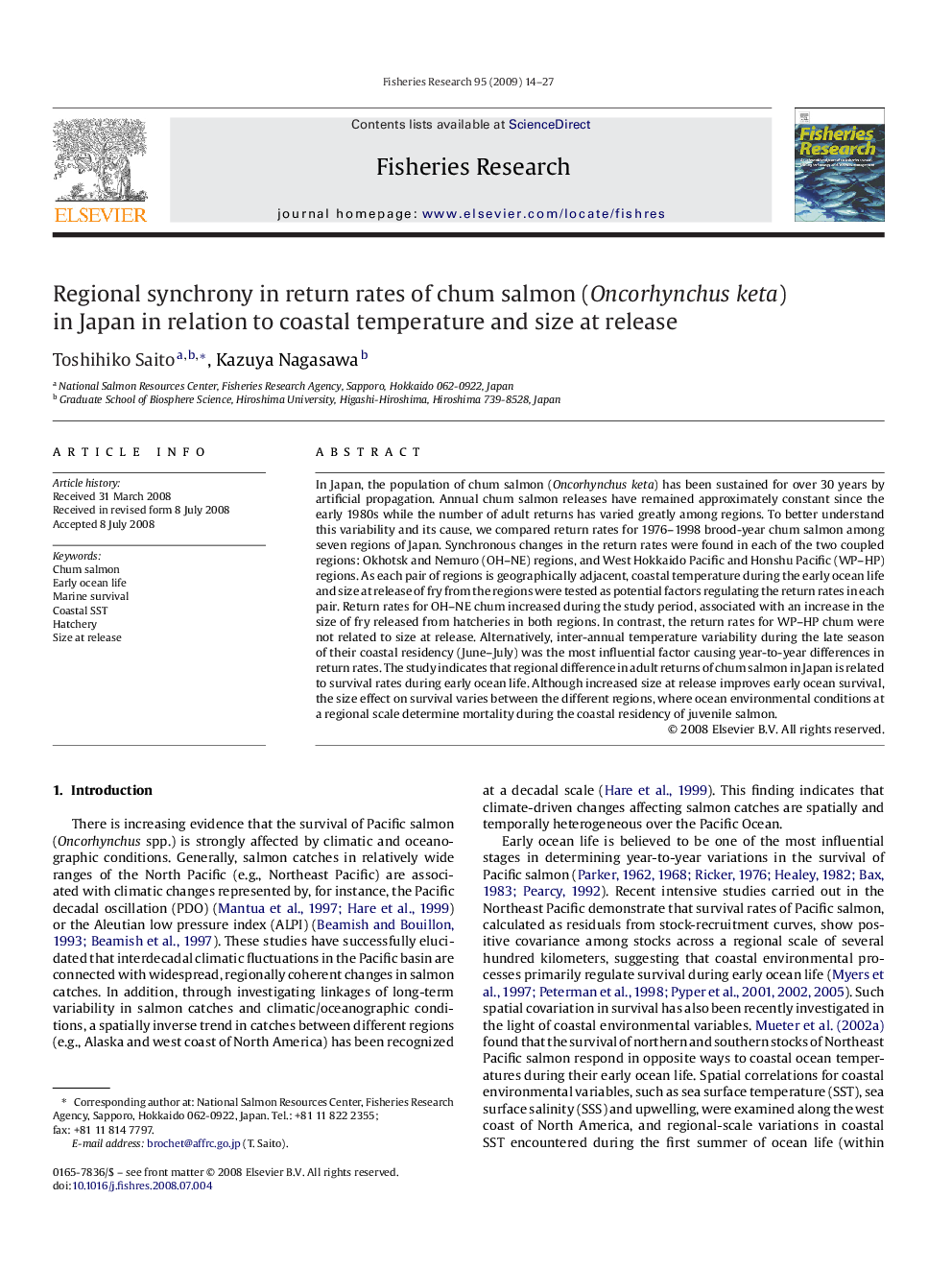| Article ID | Journal | Published Year | Pages | File Type |
|---|---|---|---|---|
| 4544254 | Fisheries Research | 2009 | 14 Pages |
Abstract
In Japan, the population of chum salmon (Oncorhynchus keta) has been sustained for over 30 years by artificial propagation. Annual chum salmon releases have remained approximately constant since the early 1980s while the number of adult returns has varied greatly among regions. To better understand this variability and its cause, we compared return rates for 1976-1998 brood-year chum salmon among seven regions of Japan. Synchronous changes in the return rates were found in each of the two coupled regions: Okhotsk and Nemuro (OH-NE) regions, and West Hokkaido Pacific and Honshu Pacific (WP-HP) regions. As each pair of regions is geographically adjacent, coastal temperature during the early ocean life and size at release of fry from the regions were tested as potential factors regulating the return rates in each pair. Return rates for OH-NE chum increased during the study period, associated with an increase in the size of fry released from hatcheries in both regions. In contrast, the return rates for WP-HP chum were not related to size at release. Alternatively, inter-annual temperature variability during the late season of their coastal residency (June-July) was the most influential factor causing year-to-year differences in return rates. The study indicates that regional difference in adult returns of chum salmon in Japan is related to survival rates during early ocean life. Although increased size at release improves early ocean survival, the size effect on survival varies between the different regions, where ocean environmental conditions at a regional scale determine mortality during the coastal residency of juvenile salmon.
Keywords
Related Topics
Life Sciences
Agricultural and Biological Sciences
Aquatic Science
Authors
Toshihiko Saito, Kazuya Nagasawa,
